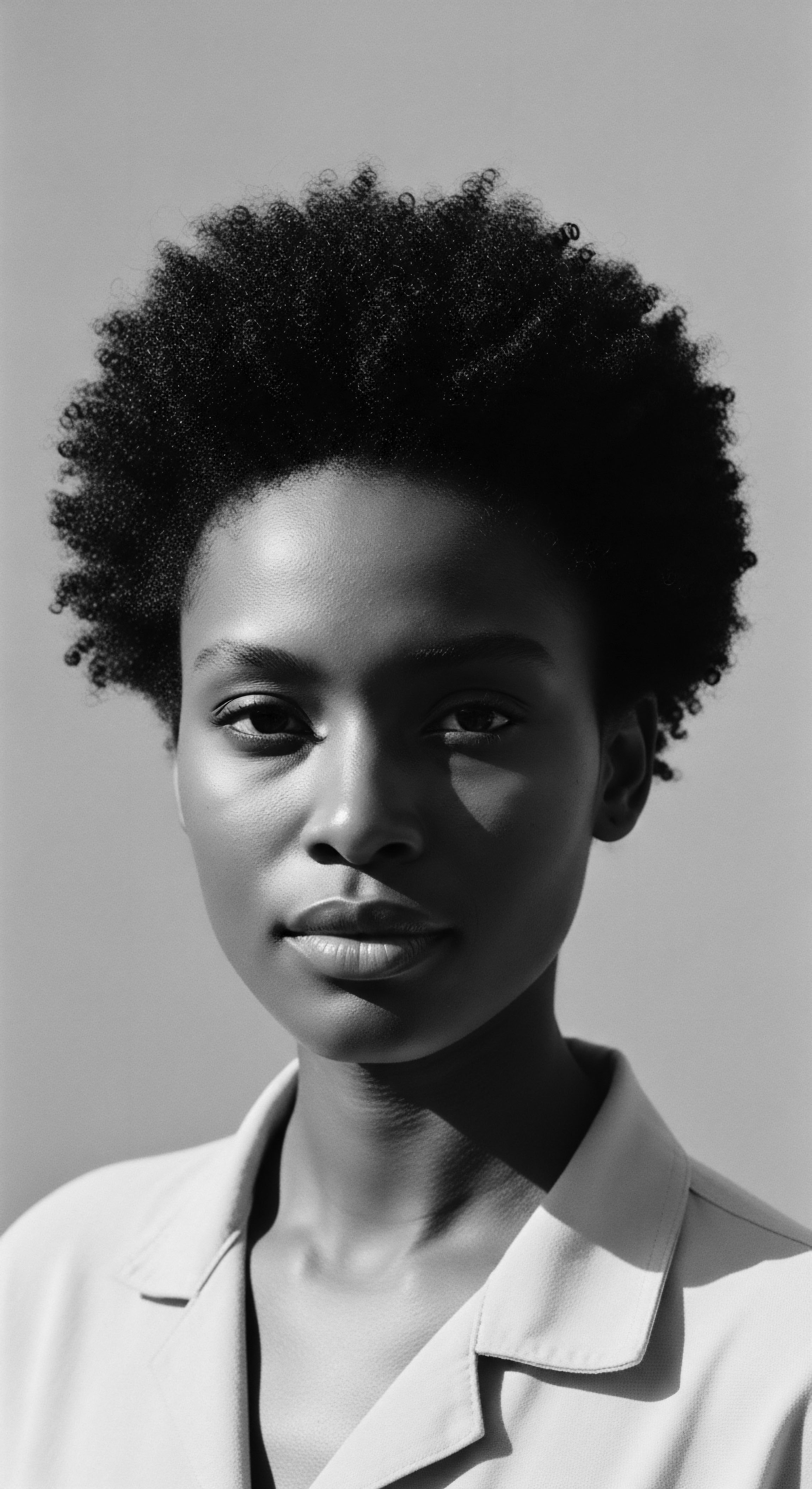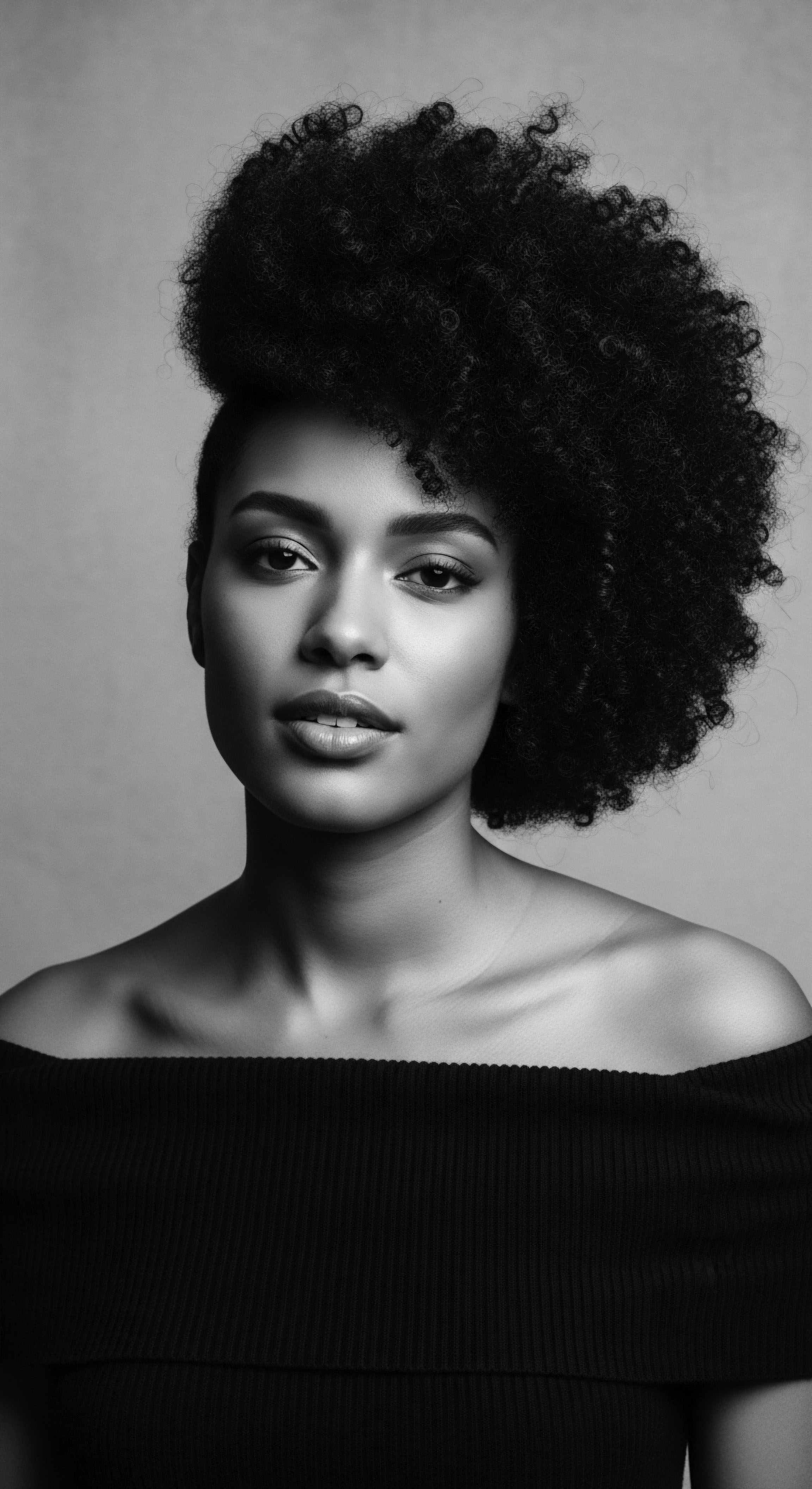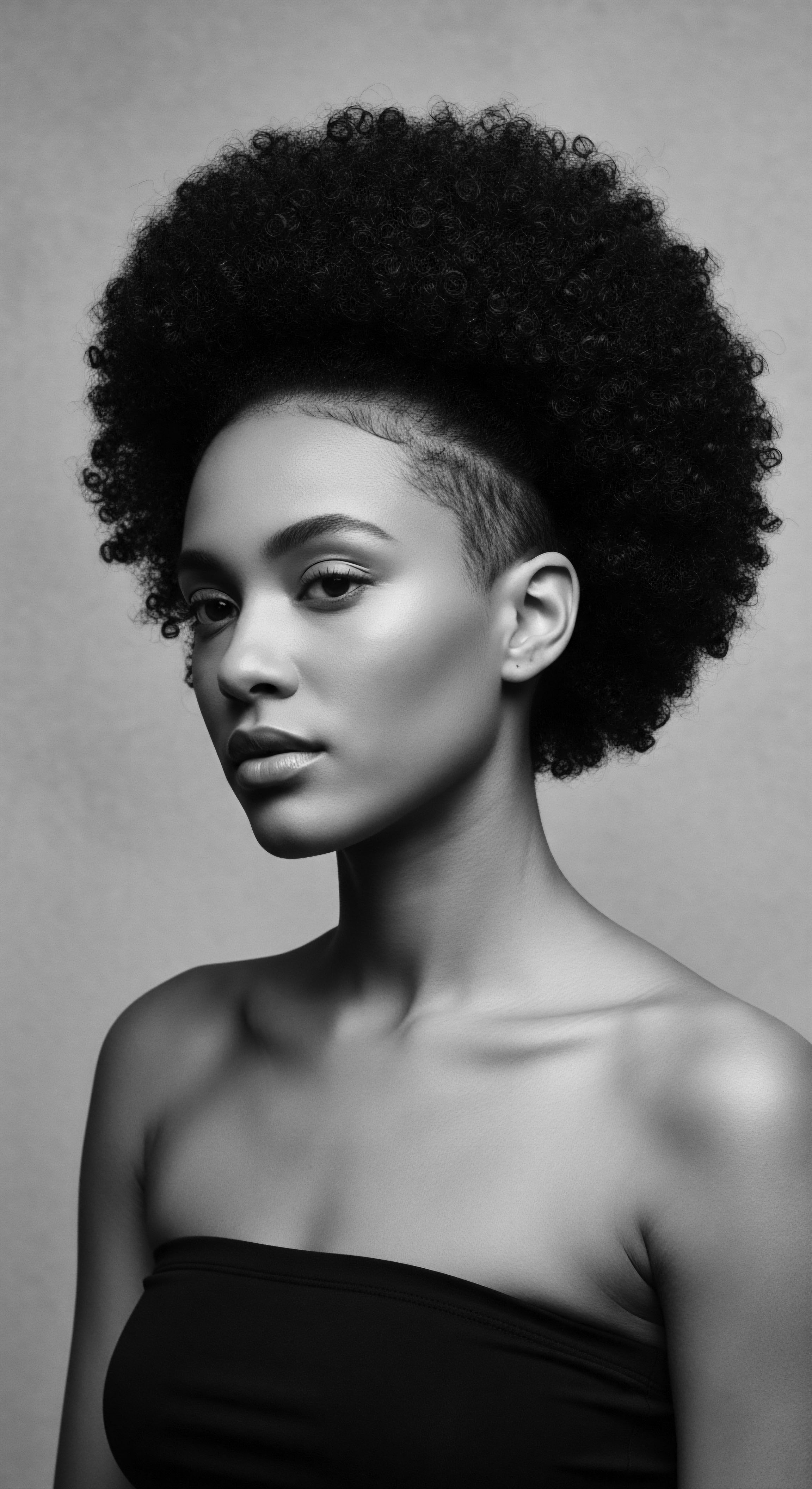
Roots
There exists a whisper, a silent memory within each strand of textured hair, a story of origins, resilience, and ancient wisdom. This story, held in the very fiber of our being, speaks of profound connections to the earth’s bounty and the ingenuity of ancestral practices. When we turn our attention to the venerable castor bean, Ricinus communis, and its precious yield, we enter a narrative far deeper than surface-level comparisons of liquid consistency or hue.
We are invited instead to consider two distinct oils ❉ the widely known, pale yellow castor oil, and its darker, more pungent cousin, Jamaican Black Castor Oil. The distinction, while seemingly simple, unravels a compelling account of heritage, human adaptation, and the enduring spirit of care passed through generations.

Tracing Castor’s Ancient Origins
The castor plant itself holds a lineage stretching across continents and millennia, a silent witness to human civilization’s ebb and flow. Its seeds, plump with a versatile oil, found their usefulness acknowledged in varied cultures. Ancient Egyptians, for instance, harnessed its properties for lamp oil as far back as 4000 BC, and Greek explorers, like Herodotus, recorded its application as a salve. Across India, China, and parts of Africa, the castor bean (Ricinus communis) was long revered for its medicinal properties and its role in traditional healing practices.
Its presence in these regions speaks to a shared, global recognition of its inherent value, a testament to its universal efficacy discovered through ancient botanical knowledge. The plant, often considered a weed in many tropical areas, found its way into pharmacopeias and folk remedies across diverse societies, marking a universal recognition of its properties.
The castor plant’s ancient history across diverse civilizations highlights its widespread recognition for healing and sustenance.
Yet, the journey of castor oil to the Caribbean, and specifically to Jamaica, marks a distinct chapter, one steeped in a particular history. It arrived not through exploration or trade in the conventional sense, but alongside the forced migration of enslaved Africans during the transatlantic slave trade, particularly between 1740 and 1810. With them, these resilient individuals carried not just their bodies, but also an invaluable repository of ancestral knowledge —wisdom concerning plants, healing practices, and methods of self-sustenance from their homelands in West Africa. This profound displacement, tragically, became the crucible for a unique cultural synthesis, where familiar plants found in their new surroundings were imbued with the spirit and techniques of distant ancestral lands.

The Jamaican Crucible ❉ Birth of a Tradition
The emergence of Jamaican Black Castor Oil is inseparable from the history of resistance and survival within the Afro-Caribbean community. In the secluded, self-governing communities of the Maroons, descendants of runaway enslaved people, traditional African practices of plant use were preserved and adapted to the Jamaican landscape. Here, where access to colonial medicine was non-existent and self-sufficiency was paramount, the castor plant became a cornerstone of their herbal traditions.
The Maroons, drawing upon generations of African healing wisdom, developed a specific method for processing the castor beans, a method that transformed the pale oil into a dark, potent elixir. This distinct preparation method, originating from West African Akan culture, was a tangible manifestation of their enduring heritage, a living testament to their resourcefulness and cultural autonomy.
This oil, known as Jamaican Black Castor Oil, became an integral aspect of Jamaica’s cultural heritage from the early nineteenth century onward. It was a homegrown remedy, a staple for medicinal applications, skin care, and especially, hair care. The cultural importance of JBCO extends far beyond its physical properties; it represents a continuation of ancestral care rituals , a powerful symbol of self-reliance and the preservation of identity amidst profound historical disruption. The very act of creating and using this oil served as a thread, connecting generations to their forebears and maintaining a vital link to their origins.

Alchemy of the Ash ❉ Processing the Distinction
The fundamental distinction between Jamaican Black Castor Oil and its conventional counterpart lies in their respective methods of production. Conventional castor oil is typically produced through a cold-pressing technique, where raw castor beans are pressed without the application of heat or chemicals. This process yields a clear, pale yellow oil, retaining a neutral pH of approximately 4.5–5.5. The focus here rests upon isolating the oil with minimal alteration, striving for a light hue and subtle aroma.
Jamaican Black Castor Oil, however, follows a time-honored, more involved process that is central to its identity and perceived efficacy. This traditional method, sustained by generations of Caribbean practitioners, begins with the careful roasting of the castor beans. This roasting process is crucial; it imparts the oil’s characteristic dark color and a distinct, smoky aroma. Following roasting, the beans are then pulverized, often in a mortar, creating a thick paste.
Water is then introduced to this mashed mixture, and the concoction undergoes a slow boiling process, often over a wood fire. During this boiling, the ash from the roasted beans, sometimes from burnt coconut shells or sugarcane, intermingles with the oil. This ash content is a defining factor, raising the oil’s pH level significantly, making it alkaline, typically ranging from 8 to 9.
The presence of this ash and the resulting alkalinity are widely considered to contribute to JBCO’s unique properties, particularly its ability to clarify the scalp and help open hair cuticles, allowing for potentially deeper absorption of the oil’s beneficial compounds. This traditional preparation, absent in regular cold-pressed castor oil, is precisely what gives JBCO its distinctive heritage and its celebrated status within textured hair care traditions across the diaspora. It is not merely a different oil; it is an oil born of a specific history, a particular environment, and a cultural practice designed for holistic wellness.
| Aspect of Processing Origin of Method |
| Regular Castor Oil (Cold-Pressed) Industrial/commercial processes, global adoption. |
| Jamaican Black Castor Oil (Traditional) Afro-Caribbean traditional practices, rooted in West African ancestral knowledge. |
| Aspect of Processing Bean Preparation |
| Regular Castor Oil (Cold-Pressed) Raw beans directly pressed. |
| Jamaican Black Castor Oil (Traditional) Beans roasted, then pulverized. |
| Aspect of Processing Heat Application |
| Regular Castor Oil (Cold-Pressed) No heat involved ("cold-pressed"). |
| Jamaican Black Castor Oil (Traditional) Roasting and slow boiling over fire. |
| Aspect of Processing Color of Final Oil |
| Regular Castor Oil (Cold-Pressed) Pale yellow, transparent. |
| Jamaican Black Castor Oil (Traditional) Dark brown to black. |
| Aspect of Processing pH Level |
| Regular Castor Oil (Cold-Pressed) Slightly acidic (approx. 4.5–5.5). |
| Jamaican Black Castor Oil (Traditional) Alkaline due to ash content (approx. 8–9). |
| Aspect of Processing Ash Content |
| Regular Castor Oil (Cold-Pressed) None. |
| Jamaican Black Castor Oil (Traditional) Contains ash from roasted beans. |
| Aspect of Processing The contrasting processing methods underscore the unique heritage that separates Jamaican Black Castor Oil from its conventional counterpart, directly shaping its properties and cultural placement. |
Indeed, a study on the physicochemical parameters of castor oils noted that conventional castor oils typically exhibit a pH range of 5.7-6.3, underscoring their generally acidic nature (Omari, Mgani, & Mubofu, 2015). This contrasts sharply with the higher, alkaline pH of Jamaican Black Castor Oil, a direct consequence of its traditional ash-inclusive processing. This scientific data provides a modern lens through which to appreciate the ancient wisdom embodied in JBCO’s creation, a process that inherently alters its chemical signature in ways understood by ancestral practitioners, even without laboratory tools.

Ritual
Moving beyond the alchemy of its making, Jamaican Black Castor Oil’s true distinction blossoms within the intricate tapestry of daily hair practice. It is here, in the tender care of coils, kinks, and waves, that the oil transcends its physical composition to embody generations of tradition, resilience, and identity. Regular castor oil, while valued for its ricinoleic acid and moisturizing capabilities globally, often enters regimens as a general botanical extract. Jamaican Black Castor Oil, however, carries the weight of a cultural legacy, its application a ritual echoing the perseverance of its people and the preservation of textured hair heritage .

Anointing the Coil ❉ Traditional Application and Purpose
From the moment of its creation in the Caribbean crucible, JBCO was not merely an ingredient; it was an integral part of a holistic wellness framework for hair and scalp. Within the Maroon communities and subsequent diasporic traditions, its application was purposeful, often serving multiple functions. It was used as a balm for the scalp, a restorative treatment for thinning areas, and a strengthening agent for fragile strands. The richness of its texture and its perceived ability to coat and protect individual hair fibers made it a staple for pre-poo treatments – applied before cleansing – and for sealing moisture into freshly washed hair.
Beyond these practical uses, the methods of applying JBCO were often interwoven with the very art of textured hair styling . Traditional styles, like braids, twists, and locs, which hold profound cultural and historical significance for Black and mixed-race communities, relied on nourishing oils to maintain the health and integrity of the hair during prolonged wear. JBCO, with its dense consistency and purported ability to improve scalp health, became a preferred choice for preparing the hair for these protective styles.
It was understood to lubricate the scalp, reduce friction during styling, and possibly soothe any irritation that could arise from intricate manipulations. The very act of applying the oil became a moment of connection, a tender exchange between caregiver and cared-for, a silent lesson passed down through touch and example.
- Scalp Massage ❉ Traditional wisdom suggested vigorous massage with JBCO to stimulate blood flow and support follicle health, an ancient practice aimed at growth and vitality.
- Protective Styles ❉ Used to prepare hair for styles like cornrows, box braids, and twists, providing a lubricating barrier against tension and aiding in moisture retention during extended wear.
- Hot Oil Treatments ❉ Warm JBCO was often applied to the hair and scalp, sometimes under heat, to deeply penetrate strands and offer intense conditioning, a practice that mirrors modern deep conditioning.

Echoes in the Modern Regimen ❉ JBCO’s Enduring Place
Today, as the global community embraces natural hair and seeks authentic, effective solutions, Jamaican Black Castor Oil maintains its esteemed position. Its traditional applications persist, albeit often framed within contemporary hair care language. The practice of using JBCO for scalp stimulation , a cornerstone of ancestral care, continues to be a widespread application for those seeking to support growth and address areas of thinning. Many hair care routines for textured hair now incorporate JBCO as a sealing oil, applied after water-based moisturizers, to help lock in hydration and prevent dryness—a technique rooted in the understanding that highly coiled hair can be prone to moisture loss.
The cultural understanding of JBCO’s efficacy has, in many ways, influenced modern product formulations. Brands specializing in textured hair care frequently include JBCO as a key ingredient, recognizing its heritage and the trust it garners within the community. This contemporary adoption speaks to the enduring power of ancestral knowledge, demonstrating how practices refined over centuries continue to hold relevance and scientific merit in a rapidly evolving world. The presence of JBCO in modern beauty aisles is not merely a commercial trend; it is a recognition of a living legacy , a testament to the wisdom that survived and thrived against overwhelming odds.

Beyond Cosmetic ❉ A Cultural Statement
The application of Jamaican Black Castor Oil transcends mere cosmetic upkeep. For many, its use is an affirmation of identity, a deliberate act of connecting with and honoring one’s textured hair heritage . In communities where hair often served as a profound marker of status, lineage, and spiritual connection in pre-colonial Africa, and later became a site of struggle and resilience during slavery and its aftermath, caring for one’s hair with traditional ingredients carries a deep meaning. The act of tending to textured hair with JBCO becomes a small, personal ritual of self-acceptance and pride, a rejection of Eurocentric beauty standards that historically devalued natural hair textures.
Using Jamaican Black Castor Oil today is a reaffirmation of ancestral practices, linking self-care to a rich cultural lineage.
Indeed, Lois Hines, a co-founder of Tropic Isle Living, a prominent JBCO brand, recounts how her ancestors brought the tradition of making castor oil from Africa to Jamaica during slavery, creating a homemade remedy that became an integral part of their lives for medicinal and hair care purposes. This personal narrative underscores how JBCO is a tangible link to a collective past, a symbol of perseverance and ingenuity that resonates with Black and mixed-race communities worldwide. When individuals choose JBCO, they are not just selecting an oil; they are embracing a story, a shared history of survival, and a beautiful continuity of care.

Relay
From the tender ritual of application, we transition to the deeper currents of understanding that bridge ancestral practice with contemporary scientific insight. The enduring efficacy of Jamaican Black Castor Oil, particularly for textured hair, begs a closer examination—a journey not just into its chemical composition, but into the wisdom encoded within its very production method. This is where the cultural historian, the wellness advocate, and the accessible scientist converge, revealing how the subtle differences in JBCO’s creation speak volumes about its particular benefits and its profound place within Black and mixed-race hair heritage .

The Chemistry of Legacy ❉ Why the Ash Matters?
The distinction of Jamaican Black Castor Oil lies significantly in its alkaline nature, a direct consequence of the ash incorporated during its traditional processing. Regular castor oil, produced through cold-pressing, retains a slightly acidic pH, typically around 5.7 to 6.3. Conversely, the roasting of castor beans and the inclusion of their ash in JBCO elevate its pH to a more alkaline range, often between 8 and 9. This shift in pH is not a mere scientific curiosity; it has implications that ancestral practitioners, through observation and inherited knowledge, instinctively understood to be beneficial for scalp and hair vitality.
Modern hair science posits that a slightly alkaline environment can help to gently lift the hair cuticle, facilitating deeper penetration of the oil’s beneficial compounds. While an overly high pH can cause damage, the specific alkalinity of traditional JBCO seems to strike a balance, potentially allowing the ricinoleic acid—the primary fatty acid in all castor oils—and other nutrients to better access the hair shaft and scalp. Furthermore, the alkaline nature is often associated with clarifying properties, potentially assisting in unclogging scalp pores and creating a healthier environment for hair growth.
This biochemical nuance validates centuries of anecdotal evidence and traditional use, underscoring the sophisticated, albeit intuitive, understanding that informed the creation of JBCO. It is a testament to how ancestral ingenuity, honed through countless trials, produced an oil uniquely suited to the needs of textured hair, long before the advent of modern laboratories could quantify its precise chemical signature.

From Maroons to Modernity ❉ Responding to Hair’s Needs
The historical context of JBCO’s prevalence for textured hair is deeply intertwined with the lived experiences of African descendants. During slavery, proper hair care was often denied, and hair became a symbol of oppression and a site of struggle. Enslaved Africans, stripped of their cultural grooming practices, faced challenges such as hair loss, scalp conditions, and general neglect.
In defiance and resilience, communities like the Maroons in Jamaica cultivated their own remedies, drawing upon African ethnobotanical knowledge, which included the use of castor plants. The application of JBCO became a response to these pressing needs—a way to address dryness, breakage, and scalp irritation that commonly affect highly coiled and kinked hair textures.
The spiral configuration and often flattened cross-section of Afro-ethnic hair, while beautiful, make it inherently susceptible to breakage and dryness compared to other hair types. The traditional, ash-infused processing of JBCO, with its higher pH and thicker consistency, was perceived to offer a unique solution to these challenges. Its perceived ability to deeply moisturize, strengthen, and support scalp health made it a cornerstone of hair care practices that were, at their heart, acts of self-preservation and cultural continuity.
Today, this historical efficacy finds validation in modern understandings of hair biology. The ricinoleic acid in castor oil, regardless of processing, possesses anti-inflammatory and antimicrobial properties. These properties, when applied to the scalp via JBCO, align with its traditional use for soothing scalp irritation and promoting a healthy environment for hair growth.
The centuries of use, from isolated Maroon settlements to global natural hair movements, stand as a testament to its enduring power, a quiet triumph of ancestral knowledge informing contemporary wellness. As Sybille Rosado (2003) noted, hair grooming practices within the diaspora are evidence of rituals practiced throughout the community, underscoring the socio-cultural role hair continues to play.

The Holistic Strand ❉ Connecting Body, Spirit, and Hair
The heritage of Jamaican Black Castor Oil extends beyond its physical benefits; it taps into a holistic worldview prevalent in many African and diasporic cultures, where the body, spirit, and environment are seen as interconnected. Hair, in particular, has long held profound spiritual and social significance, serving as a conduit to the divine, a marker of identity, and a repository of collective memory. In many traditional African societies, hair was a visual language, communicating age, social status, marital status, and even spiritual affiliations.
Jamaican Black Castor Oil is more than a hair product; it embodies a cultural narrative of resilience and ancestral wisdom.
Within this context, the ritual of applying oils like JBCO was not merely about aesthetic enhancement. It was an act of nourishment that honored the sacredness of the hair, a connection to the ancestral realm, and a reinforcement of communal identity. The consistent care, the protective styling, and the use of natural, traditionally prepared ingredients formed part of a larger wellness philosophy.
This philosophy posited that caring for the hair was a reflection of self-respect, cultural pride, and a continuity with the wisdom of those who came before. The choice to use JBCO today can be seen as an active engagement with this ancestral wisdom , a deliberate act of self-care that acknowledges and celebrates a profound cultural lineage.
The growing global demand for JBCO, with a market valued at $300 million per year and substantial year-on-year growth in exports, signifies more than just a commercial success. It reflects a growing collective awareness and a desire to connect with authentic, heritage-rooted products. A US-based survey revealed that 15% of consumers favor JBCO over other castor oil products, with 53% citing environmental sustainability and authenticity as key motivating factors for future purchase decisions. This commercial validation underscores the enduring power of its heritage, as consumers increasingly seek products that carry a genuine story and a connection to ancestral practices.

Reflection
In charting the distinctive path of Jamaican Black Castor Oil against the broader landscape of traditional castor oil, we observe a journey far richer than a simple divergence of chemical properties. We have walked through the corridors of time, listening to the echoes of ancestral whispers, tales of forced migration, and the resilient spirit of communities forging new roots in foreign lands. The story of JBCO is, at its heart, a profound meditation on the enduring soul of a strand—a testament to how a humble plant, nurtured through specific hands and imbued with deeply held cultural practices, became a symbol of heritage, healing, and identity for textured hair.
The difference between JBCO and its lighter counterpart is not found solely in a pH reading or a darker hue. It lies in the deliberate alchemy of the roasting process, born from necessity and passed down through generations, which yielded an oil uniquely attuned to the needs of highly coiled hair. It resides in the collective memory of a people who, through the very act of tending to their hair with this oil, affirmed their presence, celebrated their resilience, and kept their cultural flame alight. This oil stands as a living archive, a tactile link to West African healing traditions, to Maroon ingenuity, and to the continuous thread of Black and mixed-race experiences.
As we continue to navigate a world that often seeks to homogenize or erase diverse expressions of beauty, the unwavering presence of Jamaican Black Castor Oil reminds us of the power inherent in honoring our origins. Each drop holds not only ricinoleic acid and nourishing compounds but also the silent strength of those who transformed challenge into enduring wisdom. It calls us to look beyond the superficial, to perceive the deep historical currents that shape our present, and to recognize that true wellness often lies in reconnecting with the ancestral rhythms of care that flow through our very strands. The legacy of Jamaican Black Castor Oil, therefore, is not merely about hair health; it is about the unwavering, radiant spirit of heritage, perpetually blossoming.

References
- Byrd, A. D. & Tharps, L. (2014). Hair Story ❉ Untangling the Roots of Black Hair in America. St. Martin’s Press.
- Mbilishaka, O. (2018). PsychoHairapy ❉ A Framework for Understanding the Psychology of Black Hair and Mental Health in Hair Care Settings. The Professional Counselor, 8(4), 382-393.
- McCaskie, R. (2017). The Role of Traditional Medicine in Contemporary African Health Care. Journal of Alternative and Complementary Medicine, 23(11), 840-845.
- Omari, A. Mgani, Q. A. & Mubofu, E. B. (2015). Fatty Acid Profile and Physico-Chemical Parameters of Castor Oils in Tanzania. Green and Sustainable Chemistry, 5(4), 154-163.
- Rosado, S. (2003). Black Hair as a Text ❉ Exploring the Semiotics of Hair in the African Diaspora. PhD Dissertation, University of Massachusetts Amherst.
- Sherrow, V. (2006). Encyclopedia of Hair ❉ A Cultural History. Greenwood Press.
- Vandebroek, I. & Picking, D. (2020). Knowledge, Attitudes and Practices on the Use of Botanical Medicines in a Rural Caribbean Territory. Journal of Ethnopharmacology, 262, 113175.
